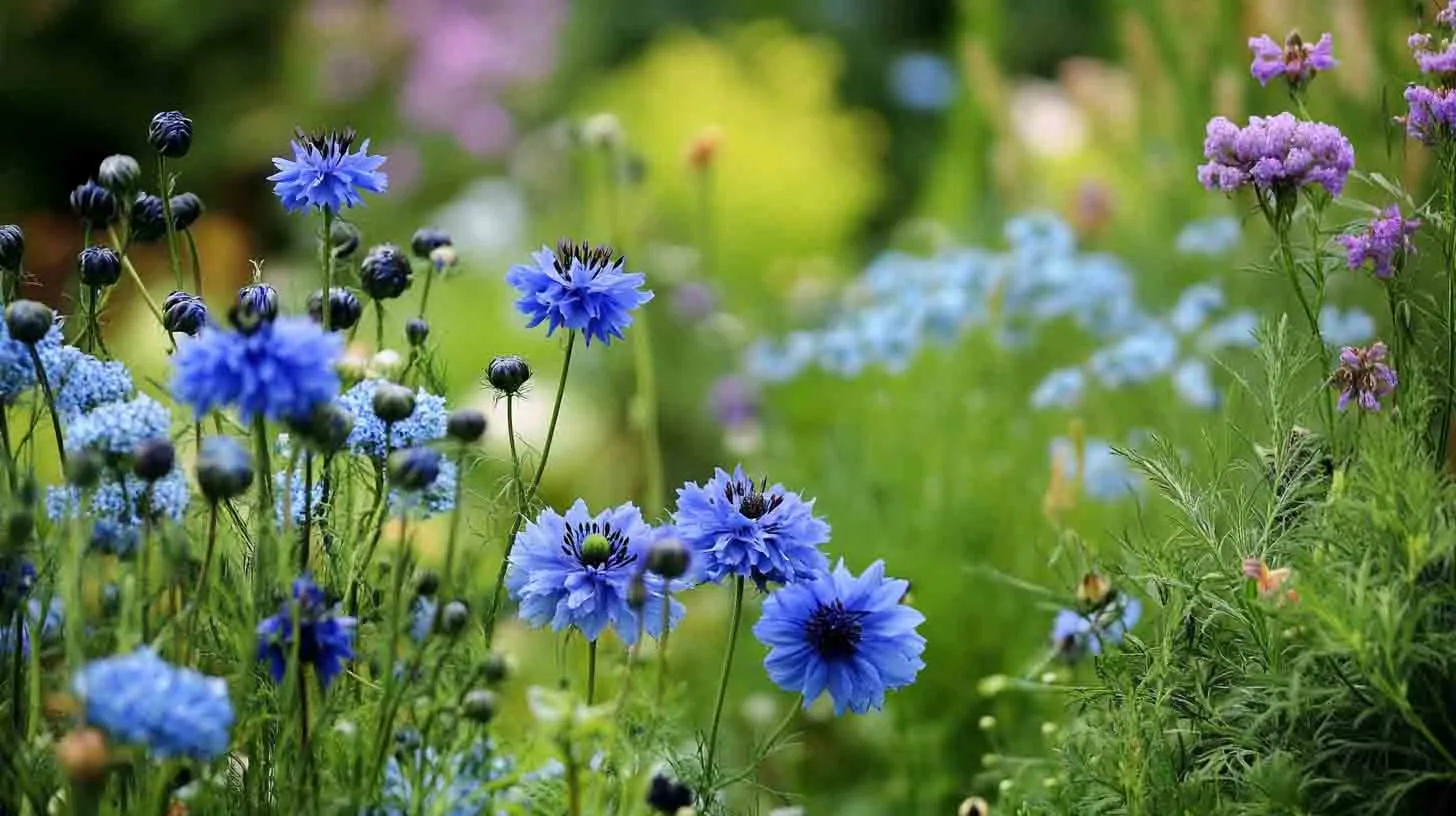If you’re like me, you’ve probably spent a little too long trying to make your garden “picture perfect” with rigid lines and color-coded beds.
But somewhere along the way, I realized the messy, wild spots were the best part.
They buzzed with life, smelled like magic, and honestly, looked like nature was just showing off.
That’s when I fell in love with chaos gardens, no stress, no rules, and flowers that thrive on doing their own thing.
And if you’re wondering which flowers won’t throw a tantrum if you forget to water them or plant them a little crooked, I’ve got you covered.
Why Carefree Flowers Matter in a Wild Garden?
Chaos gardens are all about embracing the unruly, letting plants spill, mingle, and self-seed, and just enjoying nature doing its thing.
But not every flower loves the chaos. Some demand attention. Others sulk in poor soil.
That’s why I swear by these 11 easygoing blooms, they thrive on neglect, handle a little mess, and often do better without fussing.
- Low-maintenance means you get a pretty garden without babysitting it
- Self-seeding varieties pop up year after year, sometimes in totally unexpected places
- They bring biodiversity, pollinators go nuts for these blooms
- Most are drought-tolerant or adaptable, so you’re not watering every five minutes
Basically, these flowers are your ride-or-die garden friends.
1. Cosmos
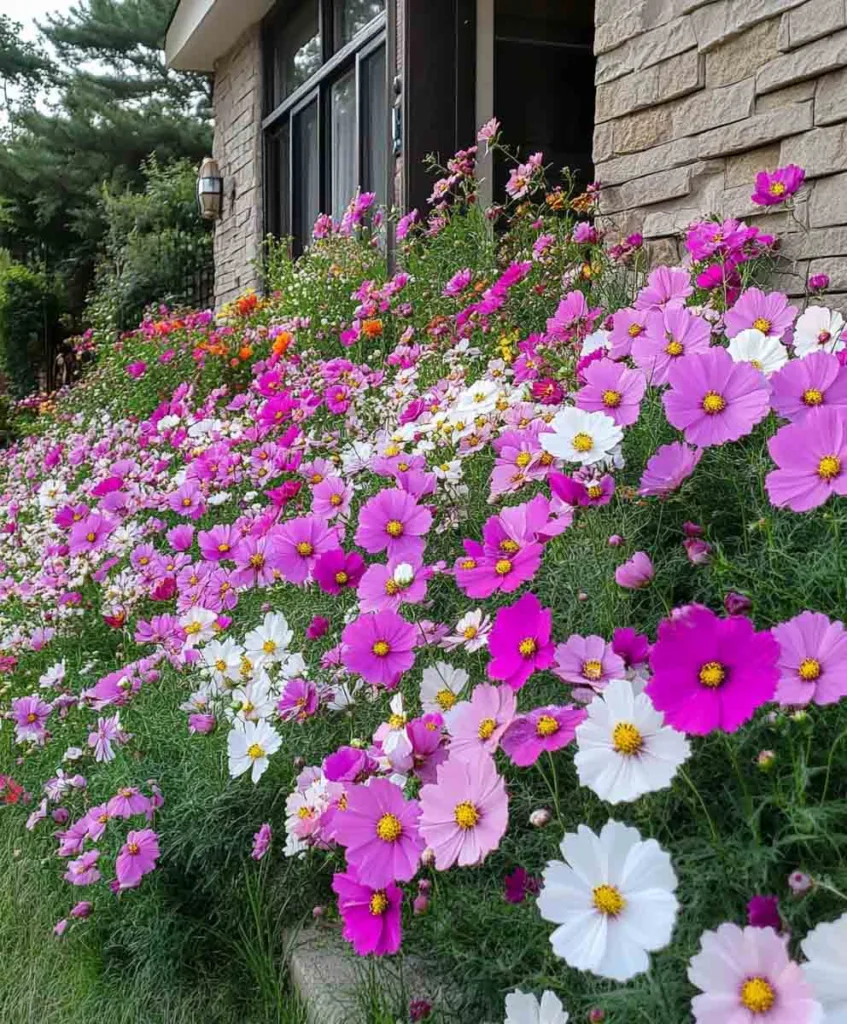
Cosmos are the poster child of chaos gardens. I tossed a packet in the wind one summer and, no joke, they took off like a confetti explosion.
- Bright, daisy-like flowers in pinks, whites, purples, and oranges
- Blooms all summer, even in poor soil
- The more you ignore them, the more they bloom
Key Tips:
- Let them self-seed! You’ll have new blooms every year
- Deadheading = more flowers, but they’ll bloom even if you don’t
Bold Takeaway: Cosmos are your flower-powered chaos allies
2. Black-Eyed Susan (Rudbeckia)
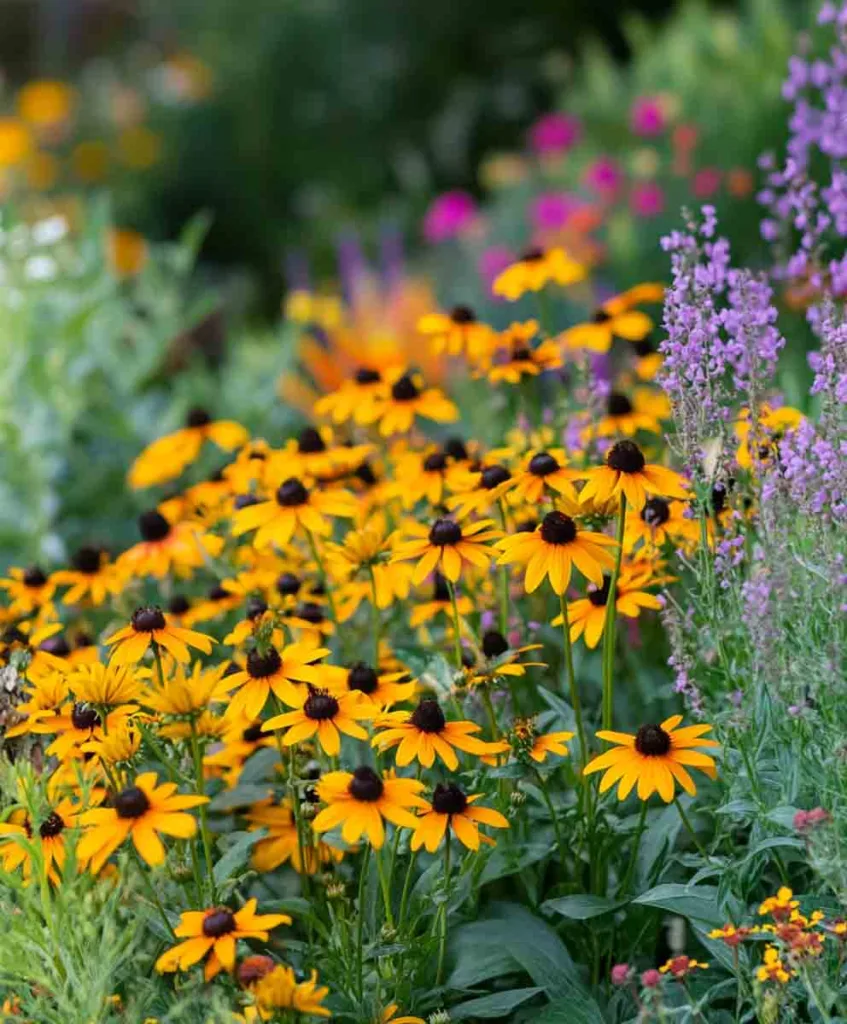
I planted three Rudbeckias once and they basically staged a friendly takeover. And I didn’t mind one bit.
- Cheerful yellow blooms with black centers
- Super hardy and drought-tolerant
- Pollinator magnet, bees, butterflies, and even birds love them
Design Tips:
- Pair with ornamental grasses for a prairie-style look
- Let them sprawl, they’re gorgeous in clusters
Bold Takeaway: Rudbeckia brings golden chaos with zero complaints
3. California Poppy
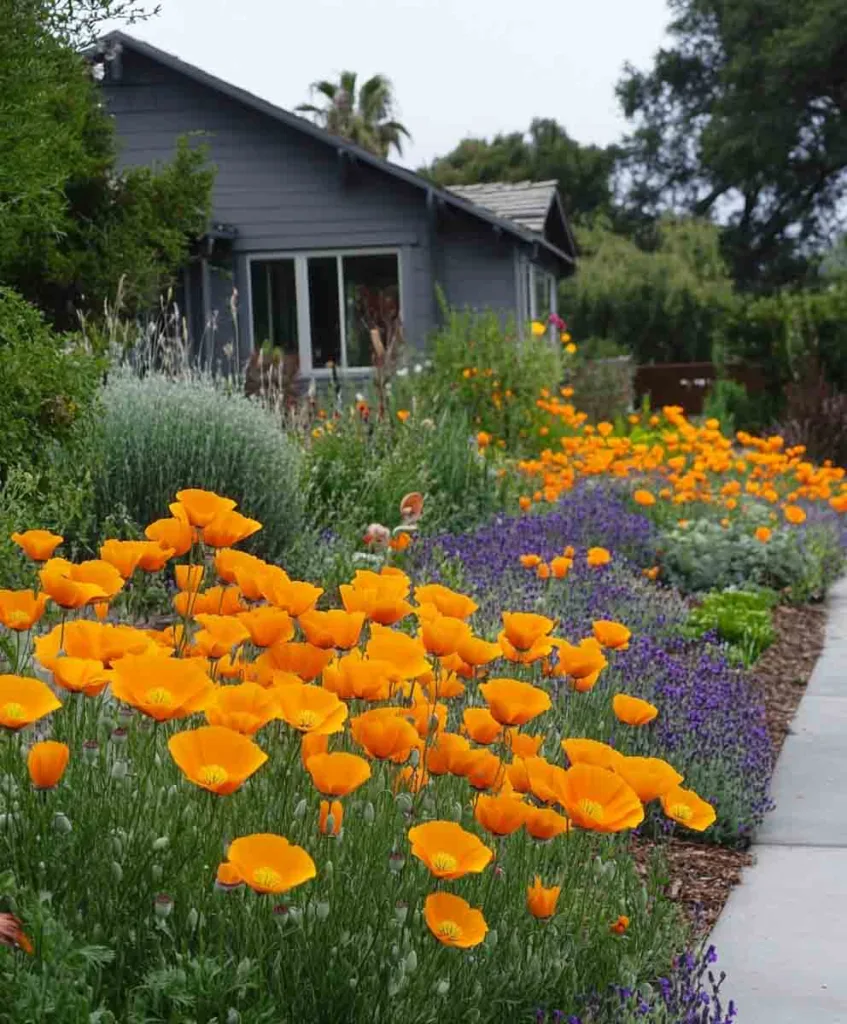
These are the definition of sunshine in a flower. I sprinkled them in dry, cracked soil and boom, glorious orange carpets.
- Lacy blue-green foliage and silky petals
- Handles poor soil like a champ
- Reseeds freely, popping up wherever it pleases
Key Features:
- Prefers full sun
- Doesn’t love transplanting, direct sow is best
Bold Takeaway: Poppies thrive on chaos and heat
4. Zinnias
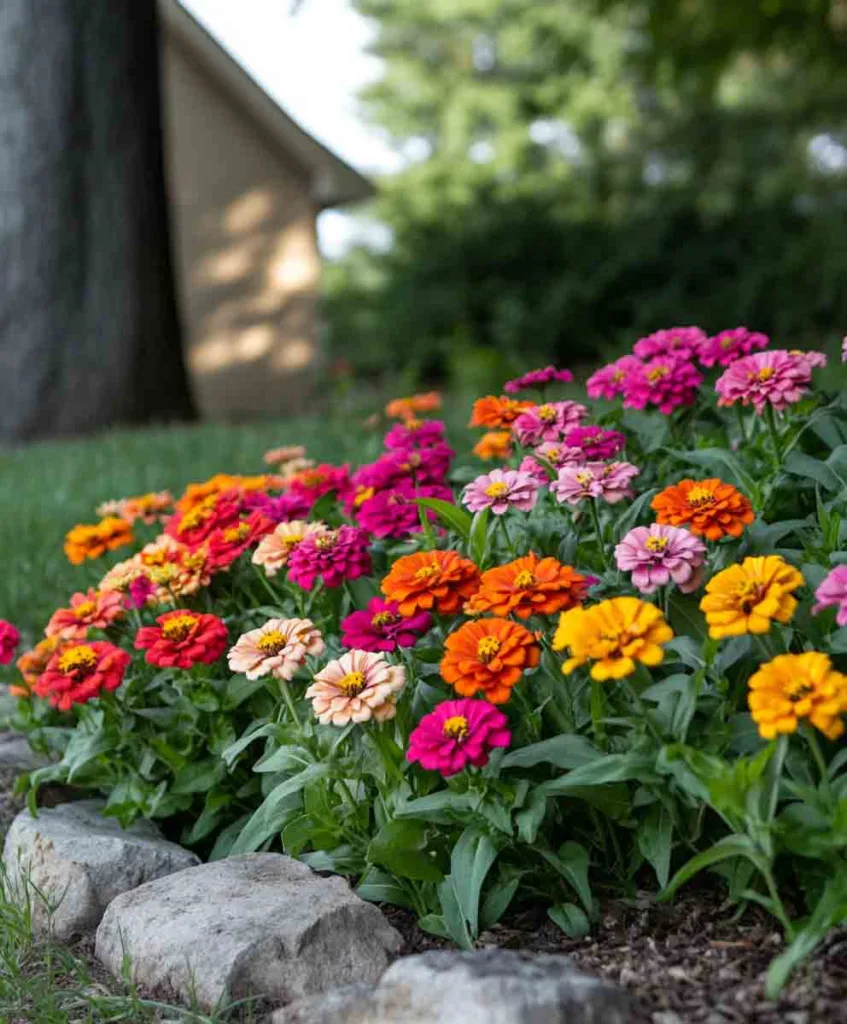
Zinnias are like that friend who shows up dressed in rainbow colors and makes the party better.
- Massive color range, from pastels to bold neon shades
- Low-maintenance and blooms all season
- Attracts butterflies like crazy
Care Notes:
- Loves sun
- The more you cut, the more they bloom
Bold Takeaway: Zinnias are carefree chaos in color form
5. Yarrow (Achillea)
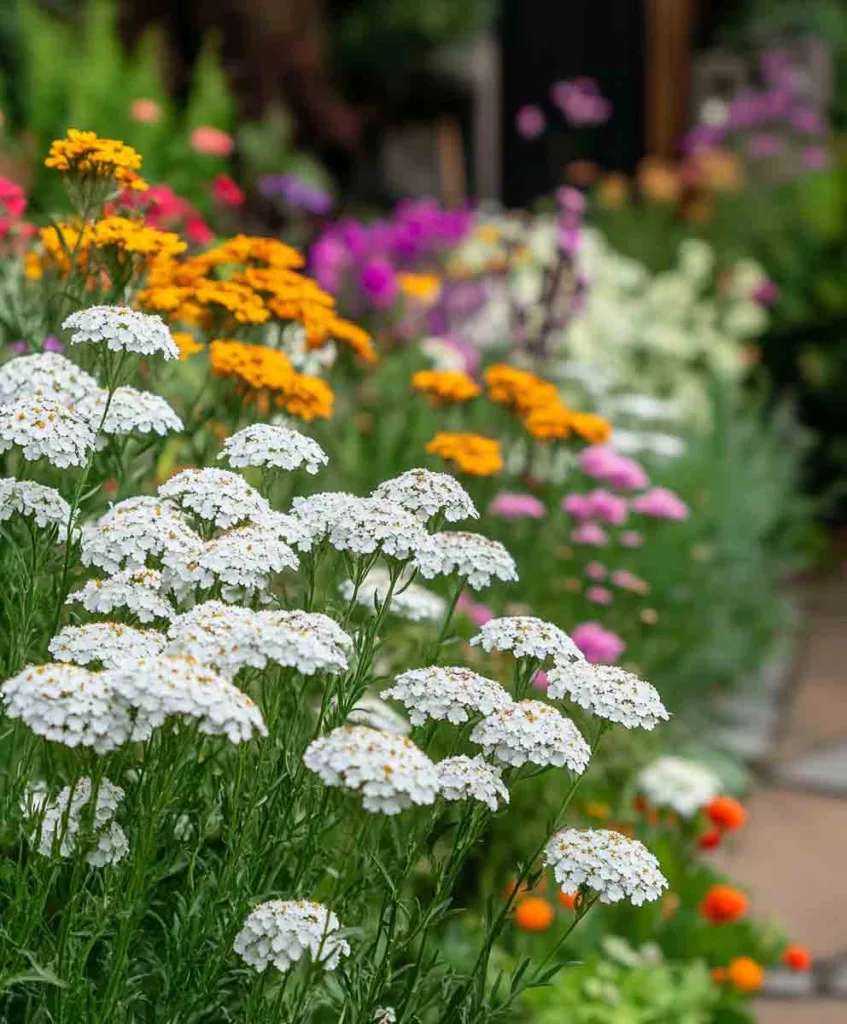
I originally planted yarrow for its medicinal vibes, but it turns out it’s just super chill and loves to spread.
- Feathery foliage and flat-topped blooms
- Comes in white, yellow, pink, and terra-cotta
- Great for dry, tough soil
Bonus Use:
- Dried yarrow = amazing in bouquets
Bold Takeaway: Tough, wild, and beautiful, yarrow owns its space
6. Blanket Flower (Gaillardia)
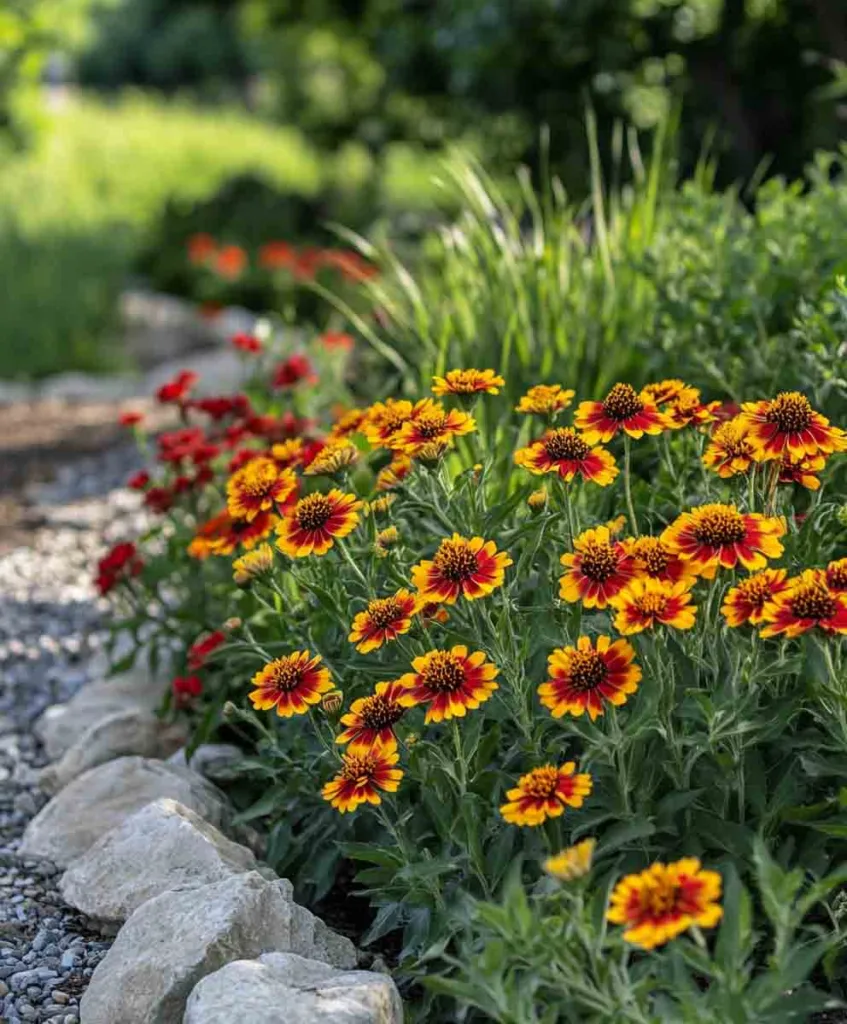
These flowers look like they belong on a warm summer quilt, hence the name. I adore how they just keep blooming, even when nothing else will.
- Fiery red and yellow petals
- Drought-tolerant, heat-loving
- Flowers from early summer till frost
Pro Tip:
- Loves full sun and lean soil
Bold Takeaway: Blanket flower keeps the fire going when others fade
7. Verbena
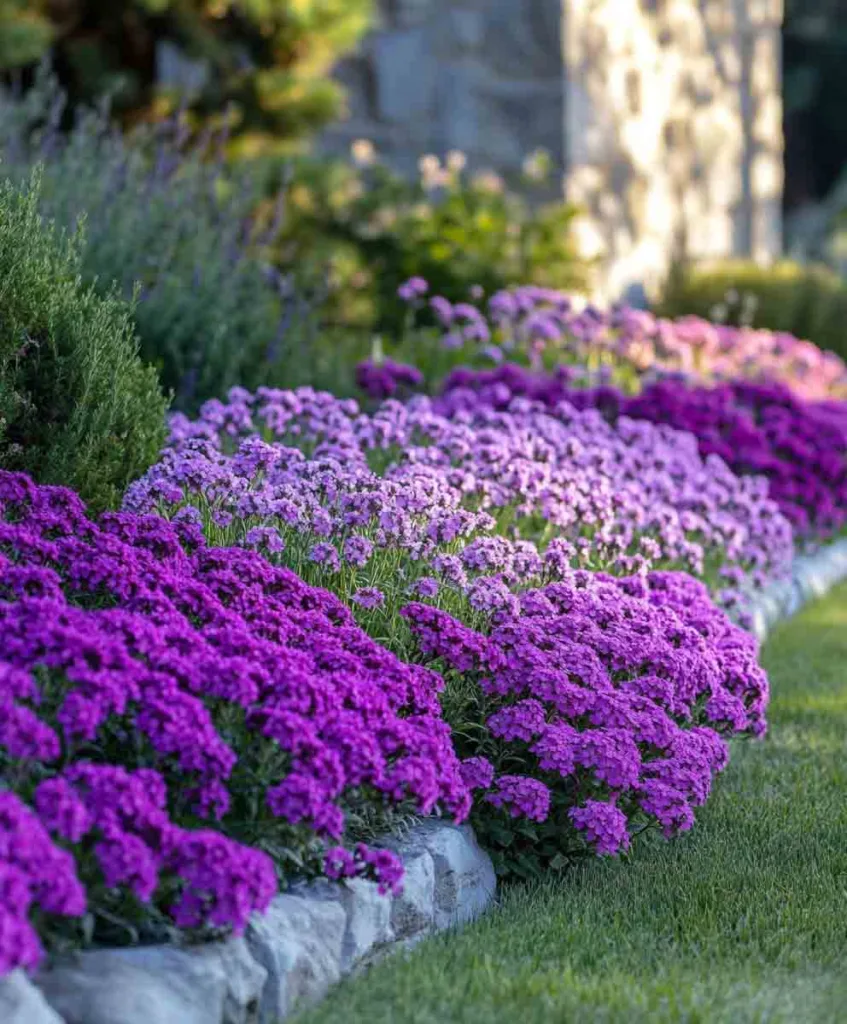
If you want something that sprawls, trails, and blooms without fuss, verbena is your girl.
- Gorgeous clusters of tiny blooms in purples, pinks, and whites
- Perfect for borders or to fill in the messy gaps
- Thrives on neglect and sun
Design Tip:
- Let it weave between stones or gravel for a wild effect
Bold Takeaway: Verbena is chaos garden glue, quiet but bold
8. Marigolds
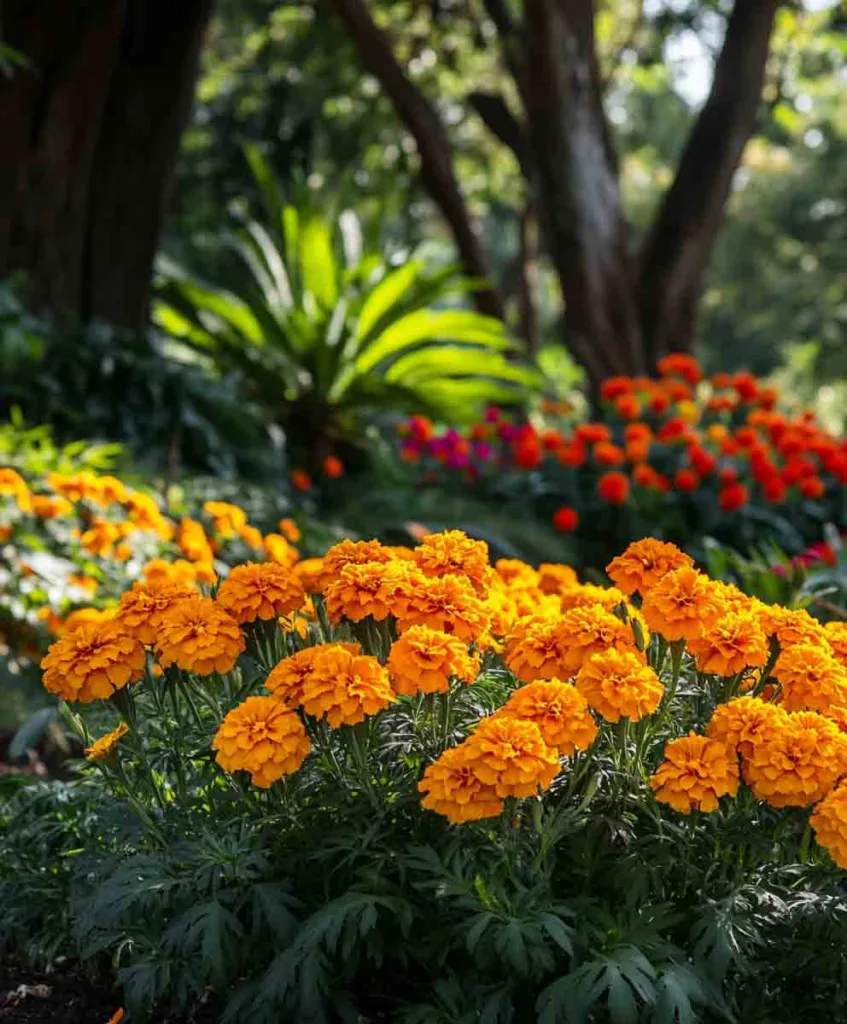
Yes, marigolds. I underestimated them for years until I threw a handful into a bare patch and they owned it.
- Bright oranges and golds that bring cheer
- Repels pests (great companion flower)
- Blooms like crazy, even in hot weather
Care Tips:
- Deadhead for more blooms
- Works well in poor soil
Bold Takeaway: Marigolds are the cheerful guardians of your wild garden
9. Bee Balm (Monarda)

The first time I saw bee balm, I thought it looked like fireworks on a stem. I planted it once and never needed to again.
- Wild, shaggy blooms in red, purple, or pink
- Spreads by rhizomes, quickly fills a spot
- Loves bees and hummingbirds
Growing Notes:
- Needs some airflow to avoid mildew
- Cut back after blooming to keep it neat (if you care)
Bold Takeaway: Bee balm brings the buzz, literally
10. Cleome (Spider Flower)
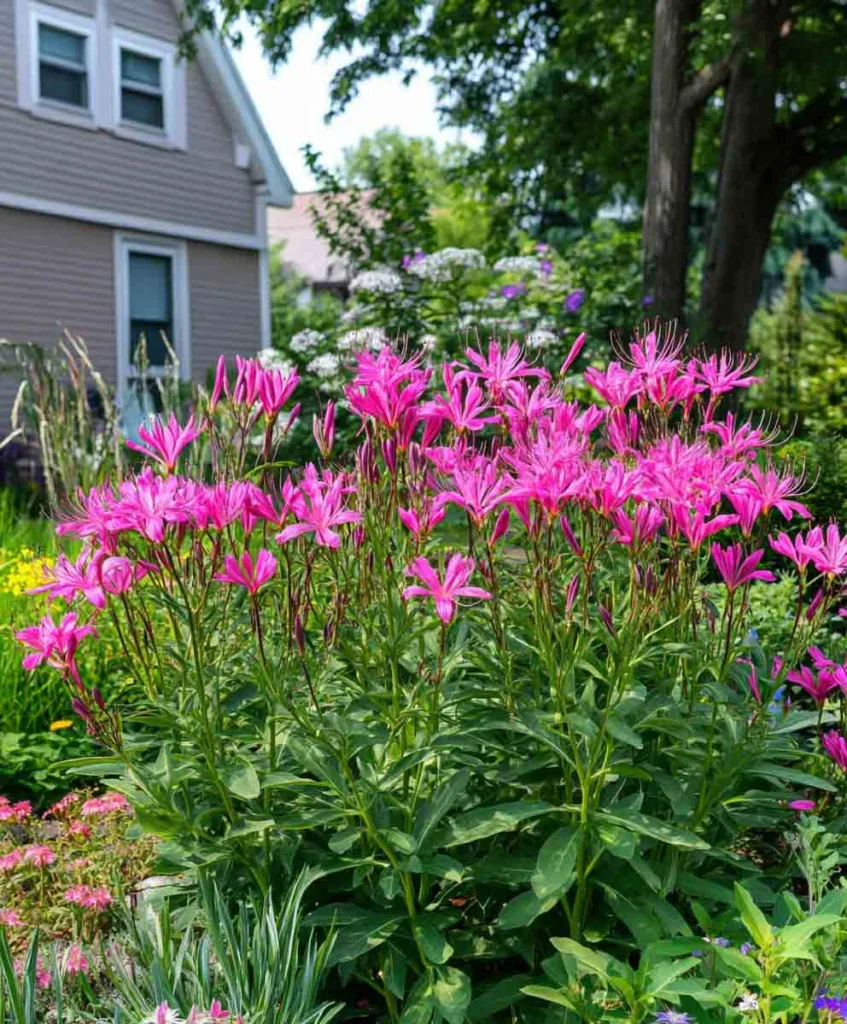
I call cleome my “fairy fireworks.” They’re tall, spidery, and weirdly elegant.
- Unique blooms with long stamens, super airy
- Grows fast and tall (3 to 5 feet!)
- Self-seeds like a pro, even where you didn’t plan
Wild Tip:
- Not great for cramped spots, they like room to stretch
Bold Takeaway: Cleome adds height and a little chaos drama
11. Love-in-a-Mist (Nigella)
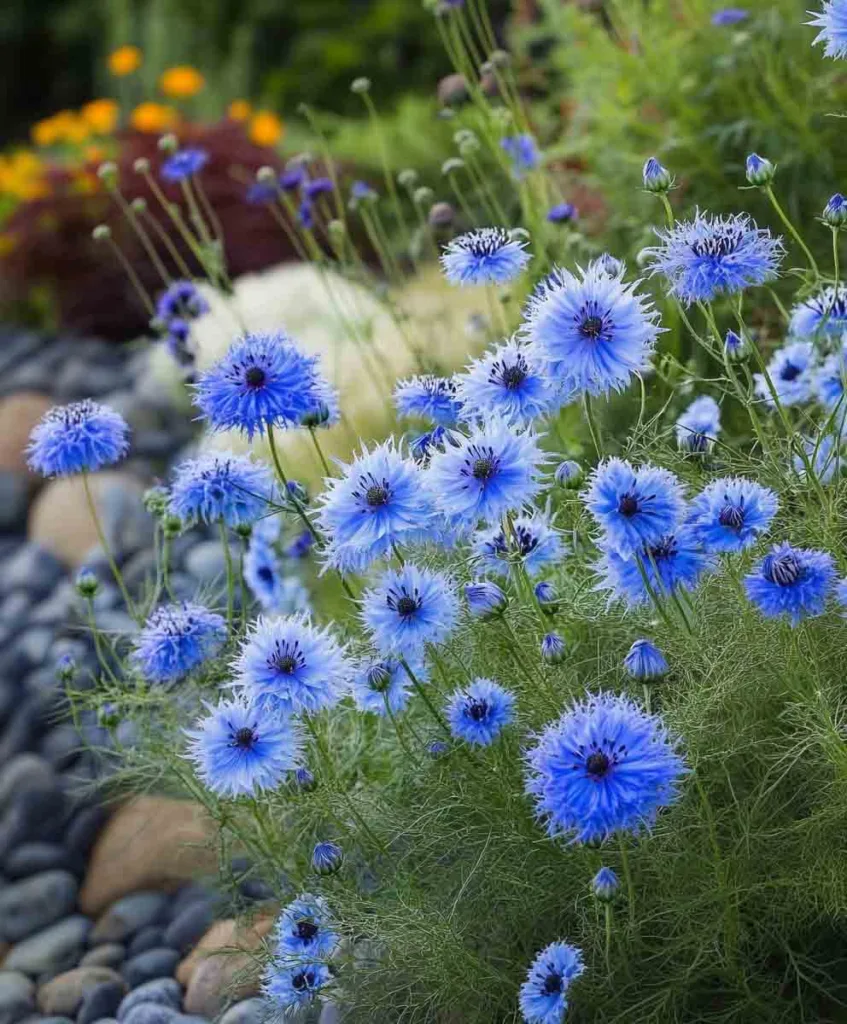
This one’s a little magical. With ferny leaves and starry blue flowers, it feels like it was plucked out of a secret meadow.
- Delicate blooms with puffy seed pods
- Self-sows like a dream
- Easy to grow and doesn’t mind a little shade
Design Idea:
- Leave the pods, they’re stunning in dried arrangements
Bold Takeaway: Nigella adds romance and whimsy to your wild patch
FAQs About Chaos Garden Flowers
What’s the best time to plant these flowers?
Most carefree flowers love being direct sown in spring after the last frost. Some, like poppies and nigella, can even be planted in late fall for early spring blooms.
Do I need to water chaos gardens regularly?
Honestly, not much! Choose drought-tolerant flowers and you’ll only need to water during prolonged dry spells. New seedlings may need help in the beginning.
Can I mix these flowers with vegetables?
Absolutely! Many of these flowers, like marigolds and bee balm, are great companion plants that attract pollinators and repel pests.
Will these flowers come back every year?
Some are annuals that self-seed (like cosmos and poppies), and others are perennials (like bee balm and yarrow). Either way, you’ll get a self-sustaining mix in a season or two.
How do I stop it from looking too messy?
That’s the beauty, it’s supposed to be messy! But if you want a little structure, add mulch paths, curved borders, or even a few tall stakes to guide the eye.
Let Nature Be Wild, And Beautiful
A chaos garden isn’t just a style, it’s a mindset. One where you let go of control, embrace the mess, and let the flowers do their wild, magical thing.
So grab a packet of seeds, skip the rules, and let your garden surprise you. Trust me, it’ll be way more fun that way.
And remember, nature doesn’t color inside the lines, and neither should you.

